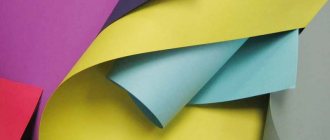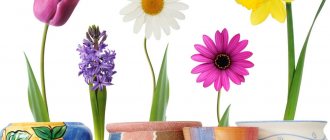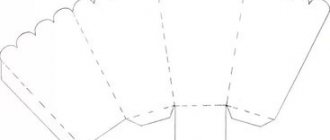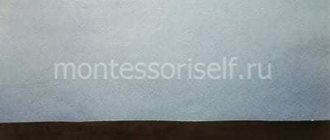Summary of educational activities with children 4-5 years old using ICT “Paper and its properties”
author: Selikhova Ekaterina Aleksandrovna
Teacher Kindergarten No. 568 Yekaterinburg
Summary of educational activities with children 4-5 years old using ICT “Paper and its properties”
Direct educational activities with children of the middle group “Paper, its properties and types.”
Goal: to continue to form children’s ideas about the properties and types of paper.
Tasks:
Educational : _
expand children’s understanding of paper production, its different types and properties;
Developing : _ _
replenish children's knowledge about the characteristics of paper, develop analytical thinking, memory, attention, observation. Learn to conduct experiments.
Educational:
to cultivate interest in the properties of the objects around us, curiosity, and respect for natural resources.
Materials and equipment : chest, scissors, ball, paper, cardboard, matches, samples of different types of paper, album sheet, glue, brushes, napkins.
ICT : projector, screen, presentation “How paper appeared”
GCD move
Educator: Guys! Today we have guests. Let's welcome our guests!
Friend on the left, friend on the right
The result is an even circle.
We will all join hands,
and let's smile at each other.
- Guys, today we have an unusual activity, a little bit magical. We will experiment with you. You will find out what we will experiment with by guessing the riddle. I brought this wonderful chest (there are different types of paper in the chest). A riddle will tell us what lies in it:
“It can be a document,
poster, candy wrapper, envelope,
letter, wallpaper, leaflet,
album, book, packaging" (paper)
- That's right guys, it's paper.
“Now it’s simply impossible to imagine life without paper.
-What is paper needed for?
- Remember where paper is used?
- But did people always have paper? (children answer negatively)
Educator: -What do you think people wrote on in ancient times? (On the rocks, on the rocks).
At different times people wrote on different materials. - How many of you know how paper is made?
Educator:
View the presentation.
Slide 1: Title page. Slide 2: Long before the advent of paper... in ancient times, people hollowed out inscriptions on stones and made rock paintings. Slide 3: In ancient Greece they wrote on damp clay tiles and tablets filled with wax, squeezing out letters with a sharp stick. They were inconvenient to carry and store. They were heavy, fragile and easily broken. Slide 4: In ancient Egypt, a plant was found on the banks of the Nile River - papyrus. Its stems were cut into thin strips, smeared with glue, ironed with a wooden smoothing iron, dried in the sun and rolled into a tube. They drew and wrote on papyrus with thin sticks. The length of such a book was 100 steps. Slide 5: Parchment was first made in the state of Pergamum in Asia. It was made from the skins of calves and sheep. Sometimes a book written on parchment was worth more than a house, because it took a herd of calves or sheep to make it. What was she like? The book resembled a chest. Slide 6: In Russia they wrote on birch bark. This is birch bark. At first they wrote letters on it, and then books. What did you write with? They scratched it with a bone or iron writing. Slide 7: The inventor Cai Lun first learned to make paper in China. A sticky mixture of bamboo and water was rolled into a flat sheet and dried in the sun. Slide 8: Nowadays, paper is produced at pulp and paper mills from wood of almost all tree species. The lumberjacks cut down the tree, divided it into parts on a machine, chopped the logs into chips, and boiled them in a solution for a long time. And then all the liquid is squeezed out, ironed with a roller, dried, ironed. This is how a blank sheet of paper comes out for a magazine, book and notebook.
OA process
-Now think and tell me, can it be that all objects and things are made of paper? (children's answers).
— Why do you think they don’t make furniture or sew clothes from paper? (various options for children's answers).
-Houses are built from stone, clothes are made from fabric. Because these materials are durable and reliable.
— Is the paper durable? We will check.
I want to invite you to the workshop where we will conduct experiments with paper. Do you want to visit there? Then close your eyes and say all together: -One, two, three, come into the workshop. (Children enter the workshop, I draw the children’s attention to the plates where the pieces of paper lie).
Experimental part.
Studying the properties of paper.
And now we will find out what kind of paper there is. Pick up the paper that is lying on your tables, touch it.
What can you say about her, what is she like? (Children take turns trying the paper by touch, identifying it by touch and describing its properties).
But we will now find out what properties paper has and for this we will conduct a series of experiments:
1) To begin with, take a sheet of paper and a sheet of cardboard in your hands and try to crumple it? Wrinkles? Twist it? Bend? (twists, bends). (Children's answers).
Conclusion: the thicker the paper, the more difficult it is to fold, curl , and bend .
2) Now tear it up. Is it torn? Sturdy paper?
The paper tears, which means it is fragile.
Conclusion: cardboard is thicker than paper, paper tears easily depending on the thickness.
3) Take scissors and cut first the paper, then the cardboard.
Conclusion: cardboard is thicker than paper. The paper is cut according to ease depending on its thickness.
Do you think it is possible to join the paper? How? (Glue, sew, intertwine).
4) Now put a sheet of paper in a container of water. First dip a napkin into the water, then a landscape piece of paper. What happened?
Conclusion: thin paper gets wet faster and falls apart, thicker paper also gets wet, but it will take longer. Paper is afraid of water, paper is not a durable material.
5) Look, guys, now I’ll set the paper on fire. What happened to her?
Conclusion: the paper burns.
6) Now let's experiment, how does a piece of paper fall?
Raise a piece of paper above your head and release it from your hands. It falls smoothly, swaying in different directions. Tear off a narrow strip from it, lift it above your head and release it. It falls differently: rotating around its axis from top to bottom, i.e., the paper falls in different ways.
Research findings.
- Paper can be thin or thick in structure.
- 2. Paper can be strong or weak.
- Paper is afraid of water.
- Paper can be cut with scissors or torn by hand.
- "The paper is burning"
Game "Magic Paper"
I'll throw the ball to you. Whoever catches it must say what can be made from paper (books, notebooks, boxes, wallpaper, etc.).
And now we’ll tell you what you can do with paper (draw, cut, glue, crumple, tear, etc.).
Final part Well done! Well, it's time to return from the workshop. Let's close our eyes and say the words:
One, two, three, come back to the group. We found ourselves in a group again.
Reflection
Was it interesting in the workshop? What new things have you learned about paper?
Summary of educational activities with children 4-5 years old using ICT “Paper and its properties”
Open lesson “Properties of paper”
MUNICIPAL PRE-SCHOOL EDUCATIONAL BUDGETARY INSTITUTION KINDERGARTEN No. 7 OF THE CITY DISTRICT OF THE CITY OF NEFTEKAMSK
Cognitive - research activities in the 2nd junior group “Property of paper”
| Prepared and conducted by teacher II ml. gr. Shaikhutdinova V.A. |
2016
Goals:
Develop the ability to observe and draw conclusions. Introduce children to the properties of paper. During experimental activities, learn to give complete answers. Develop children's thinking and speech. Cultivate curiosity.
Equipment
: box, various types of paper, containers with water.
Progress:
1. Guys, I brought you this box today. Want to see what's inside? What's there? (papers) That's right, there is a lot of paper in the box. Why do we need paper? That's right, you can draw on paper, you can glue it, you can wipe yourself with it. Look, are the papers in the box all the same or are they different? To find out, we will play with them and look at them.
Work at the first table
. Equipment: sets of different papers - landscape sheet, napkin, notebook sheet, pieces of wallpaper, velvet paper, etc.
1.
Look how many different types of paper there are, let's touch and look at them
What does a green piece of paper feel like... (smooth)
How does a red piece of paper feel... (rough)
How does a blue piece of paper feel... (thick)
What does a yellow piece of paper feel like... (thin, soft).
Paper feels different to the touch: smooth, soft, rough, thin, thick, etc.
Look at the color of the paper? (multi-colored.)
Now we will play the d/game “Show me correctly.” Whatever color I name, this is the color of the paper you should lift. Pick up the red, blue, etc. paper.
Guys, is it possible to see anything through paper?
- Take the paper and look through it. Can you see anything?
This means the paper is thick, and nothing can be seen through the paper.
2. “Crinkle and smooth”
You can also wrinkle the paper. Take thin, smooth, white paper and crumple it, like this, and we have a bun, now smooth it out. Happened?
Conclusion: the paper can be wrinkled and smoothed.
Work at the second table.
1.
Equipment: container with water, paper.
- Now take strips of paper and put them in a container of water. What's happening? The paper is wet, try to pick it up. What happened? The paper is torn.
Conclusion: the paper is wet and torn. Paper is afraid of water.
2.
Paper can be torn into small pieces by hand; which paper tears easier: landscape paper or colored paper? Look how many small pieces we got. Do you think we need them? What can you do with them? (glue)
Of course, you can make an applique from small pieces of paper. Look at the drawings I drew for you, do you like it? And I really like them, but if you cover them with our pieces of paper they will become even more beautiful. Today after sleep we will decorate our drawings.









